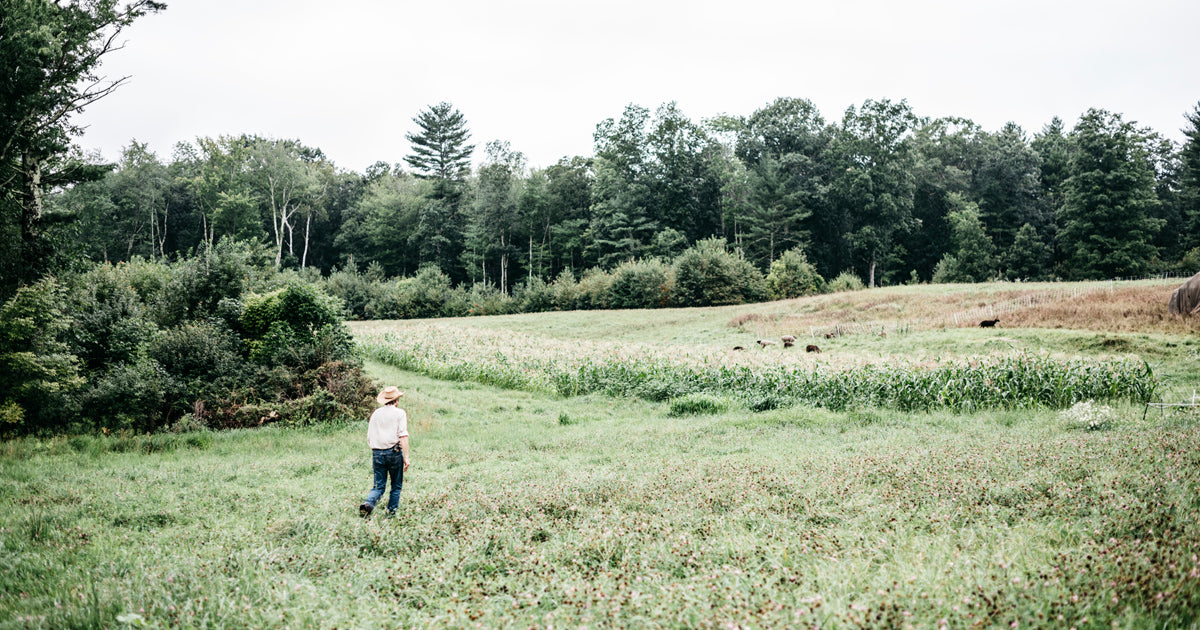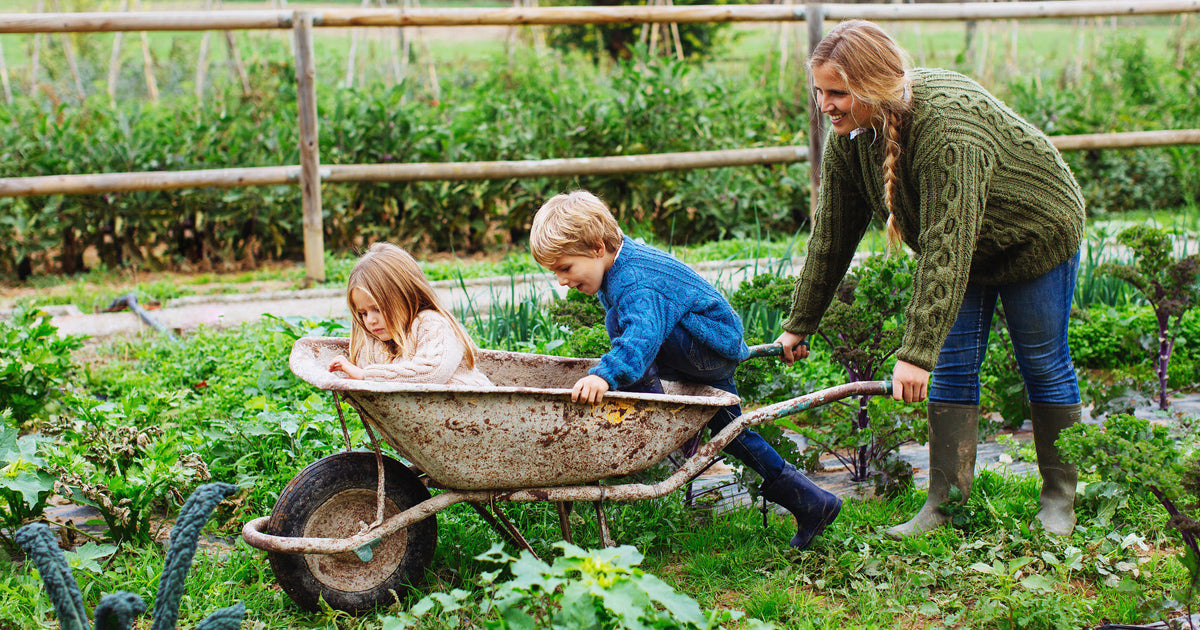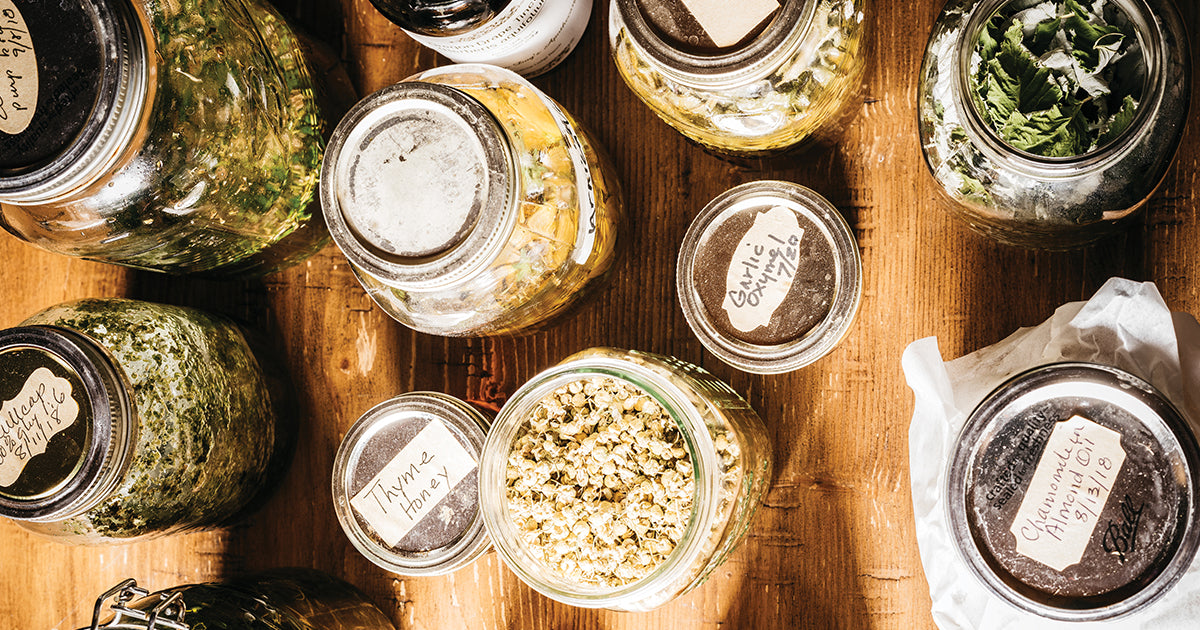Back to our roots: how soil can save us

Sara Newmark, VP of Social Impact | July 2018
MegaFood is out to change the world starting with food.
Our world is in desperate need of better nutrition. Our soil lacks the nutrients it needs to grow healthy plants, our plants lack the nutrients to support healthy people, and we lack the nutrients to support healthy futures. That’s why it’s time to make real change. As we build out our long-term social impact strategy, we focus our attention on root causes, asking questions like:
- What leads people to eat less nutritious food?
- What has made our food less nutritious?
To get to the root of the issue, we must look at the root of our food. That’s right: It literally begins with the soil!
We can’t uphold our mission without addressing the larger picture and underlying driver behind producing supplements made with whole foods: soil health. Healthy soil produces crops with higher nutrient densities, and a great way to manage the land for optimal soil health is by implementing regenerative agriculture. You've never heard of "regen ag?" You're not alone.
What is soil, anyway?
Soil is weathered rock materials (sand, silt, clay) that are – or have been – in contact with plant roots. It's under our feet, under our crops, pastures, livestock, fruit, vegetables, timber…
We’ve often been told soil is at the base of the pyramid of life. But... what if it’s not?
Green plants capture sunlight and carbon dioxide (CO2) and turn weathered rock minerals into soil. But only if they are growing in association with beneficial microbes. Fertile topsoil is a product of photosynthesis and microbial resynthesis. It is photosynthesis, not soil, that forms the base of the pyramid of life.
- Photo = light
- Synthesis = putting together
- Photosynthesis = "making life from light"
How does soil work?
Since soil is only created in relationship with microbes, and since 85 to 90% of plant nutrient acquisition is microbially mediated… guess what that means? Without microbes, plants would starve to death!
It was over 70 years ago that human vanity replaced organic processes with lifeless chemistry- also known as conventional agriculture. And it’s no surprise: chemical applications and inputs that kill the microbial community in the soil have a profound impact on soil formation. As a result, carbon is no longer being introduced into the soil.
Why does this matter?
We have a carbon crisis. Here are a few numbers for you:
- The carbon in the atmosphere is currently at 410 ppm
- Even the most conservative estimates say we need to get back to 350 ppm to sustain life on earth
Now, whether or not you believe in climate change, the question here is: Do you believe in food?
According to the UN’s Food and Agriculture Organization, the world on average has just “fifty-seven more years of growing crops.”1 Think about that. Fifty-seven more harvests of food left before there is no more topsoil to grow food.
According to the House of Commons Environmental audit committee (16-17), “Carbon losses pose a threat to the sustainability of food production, with some of the most productive land in England at risk of becoming unprofitable within a generation due to soil erosion and loss of carbon.”
Around the planet, we have already lost between 30-70% of all topsoil.
So is there an easy answer? Can we grow more food, enjoy greater resilience in the face of drought and climate extremes, and at the same time have our food be more plentiful, nutritious, and inexpensive? The good news is: Yes.
Regenerative agriculture is our future
Regen Ag describes farming and grazing practices that, among other benefits, reverses climate change by rebuilding soil, organic matter, and restoring degraded soil biodiversity. This results in both carbon drawdown and improving the water cycle. (Awesome, right?) Specifically, regenerative agriculture is a holistic land management practice that leverages the power of photosynthesis in plants to close the carbon cycle, and build soil health, crop resilience and nutrient density.2

Regenerative agriculture improves soil health, primarily through practices that increase soil organic matter.
These practices include not tilling the soil, and maintaining a diverse array of cover crops with no synthetic fertilizers or chemical pesticides. This method not only aids in increasing soil biota diversity and health, but increases biodiversity both above and below the soil surface. It increases both water holding capacity, and sequesters carbon at greater depths. This in turn draws down climate-damaging levels of atmospheric CO2, and improves soil structure to reverse civilization-threatening, human-caused soil loss.
Research continues to reveal the damaging effects to soil from tillage, applications of agricultural chemicals and salt based fertilizers, and carbon mining. Regenerative agriculture reverses this paradigm to build for the future.
To recap, regenerative agricultural practices:
- Build soil and soil health
- Absorb and clean water
- Increase biodiversity and ecosystem health
- Sequester carbon
How is MegaFood getting involved?


MegaFood staff got their hands dirty preparing garden beds for planting while volunteering at The Food Project.
Walking the walk
MegaFood is committed to significantly impacting the success of the “regen ag” movement in both big and small ways. Wondering what we do?
- We prioritize working with trusted farmers that manage their land in a sustainable manner.
- We achieve certifications to ensure our products are made from crops grown without herbicides and pesticides, including a certification that assures MegaFood is free of glyphosate residue, the #1 used herbicide in the US.
- We’re leading an initiative to Ban Glyphosate with the Environmental Working Group, Ben & Jerry’s, Patagonia, Stonyfield, MOMs Organic Market and more!
- We volunteer at local farms.
- We read books like Kiss the Ground in our company book club, and invite the author, Josh Tickell, to lead our discussion.
- We hired a VP of Social Impact (a.k.a., yours truly) to oversee this movement.
- We partner with The Carbon Underground and Green America, to begin development of a new, outcomes-based regenerative agriculture global verification standard for food grown in a regenerative manner which seeks to encourage farmers to restore the carbon cycle and build soil health, crop resilience, and nutrient density.
- We launched a new Healthy Farm Standard program to transform “agri-culture” by empowering communities, revolutionizing food systems, and committing to radical transparency.
And we are planning so much more! Thanks for taking this journey with MegaFood. Stay tuned for developments surrounding these initiatives in the works, and other ways MegaFood is advancing soil health.
Learn more:
1https://www.scientificamerican.com/article/only-60-years-of-farming-left-if-soil-degradation-continues/
2https://thecarbonunderground.org/wp-content/uploads/2017/02/Regen-Ag-Definition-7.27.17-1.pdf




Leave a comment
This site is protected by hCaptcha and the hCaptcha Privacy Policy and Terms of Service apply.